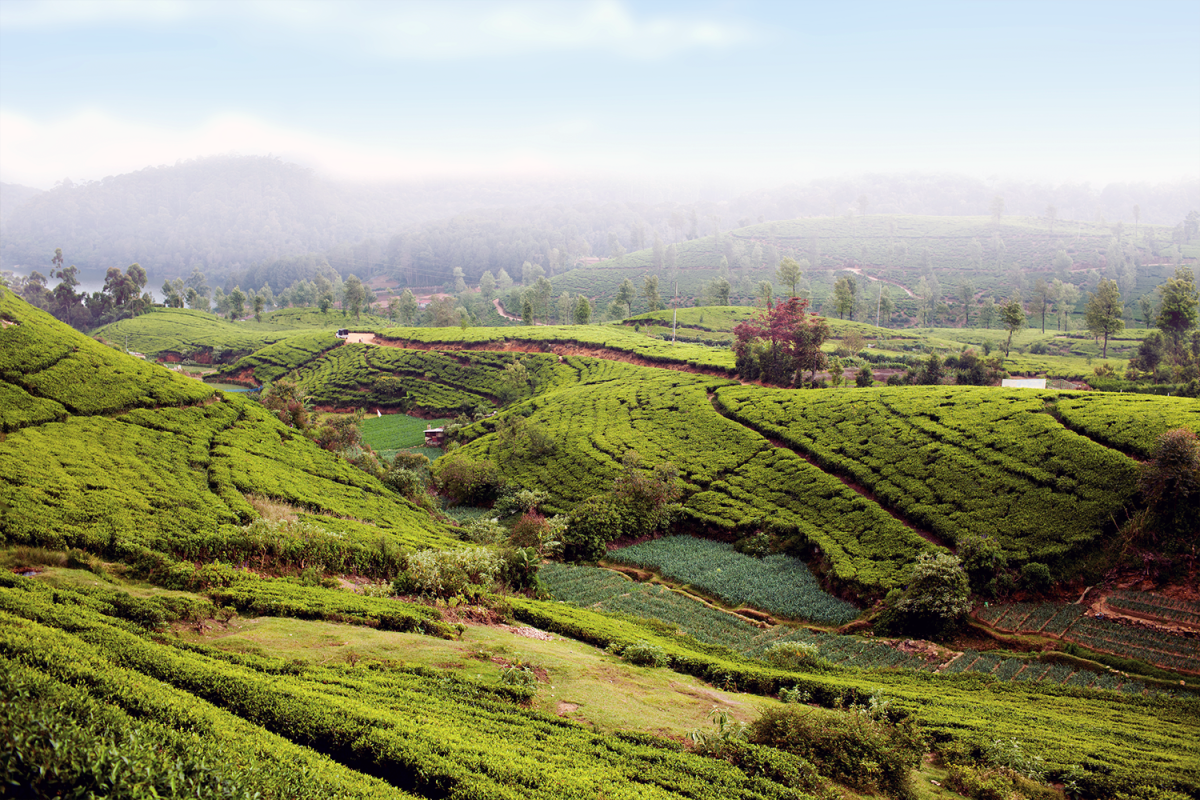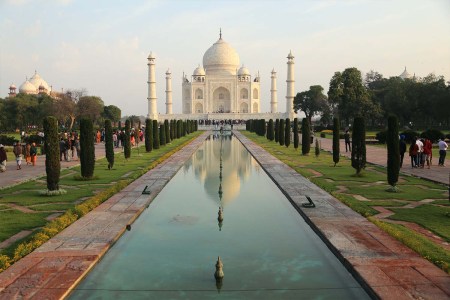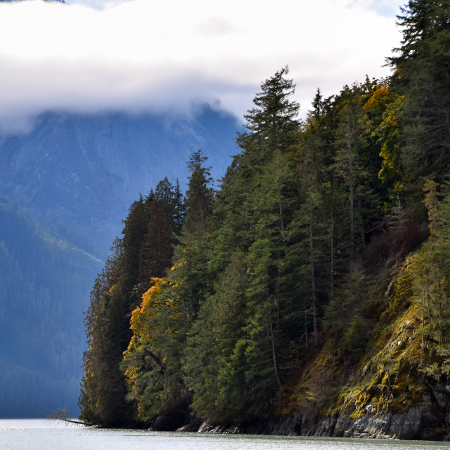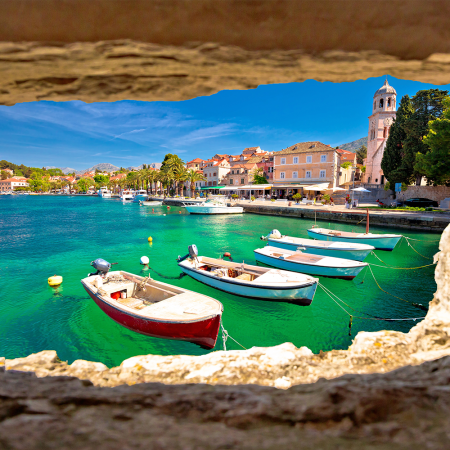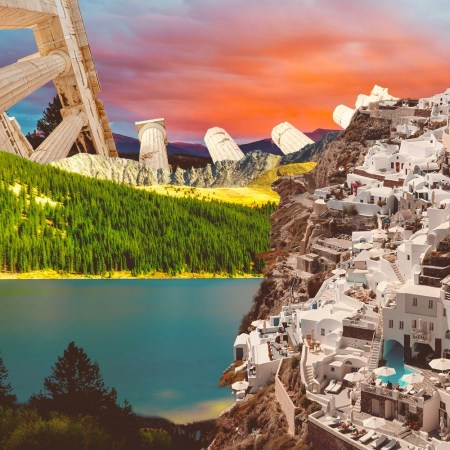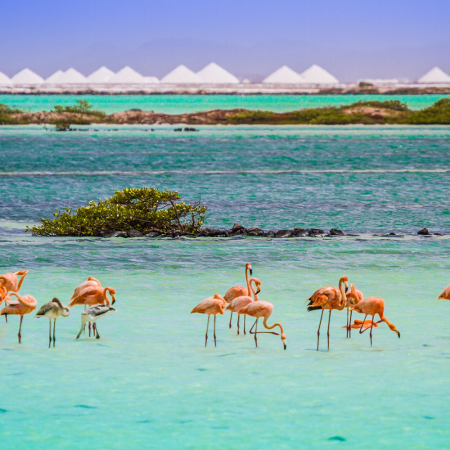Sri Lanka can be translated as Resplendent Island, or Great Island, and with its lush, varied landscapes and abundance of resources, it’s easy enough to see why. Now the oft-struggling island nation is seeking to reclaim that destiny for itself.
That name, representing the island’s spices and gems, its forests and tea plantations, is now a dream, a hope for the future. After decades of violent civil war, followed by the shattering 2019 terrorist bombings in its capital, the 2020 pandemic and political turmoil, corruption and economic strife thrown on top for good measure — all of this after a string of three colonizing powers over a period of centuries — Sri Lanka is seeking to emerge on the other side not with its past wiped clean, but with a fresh start.
Sri Lankans are seeking the realization of another translation of its name, Prosperity, on their island. The ubiquitous greeting of ayubowan, or may you live long, is a genuine gesture. They welcome tourists with open arms to come and see what makes their country so special and to help them achieve that vision for what the future could hold. Yes, it is safe to travel to Sri Lanka right now, and yes, a resplendent island of wonders awaits.
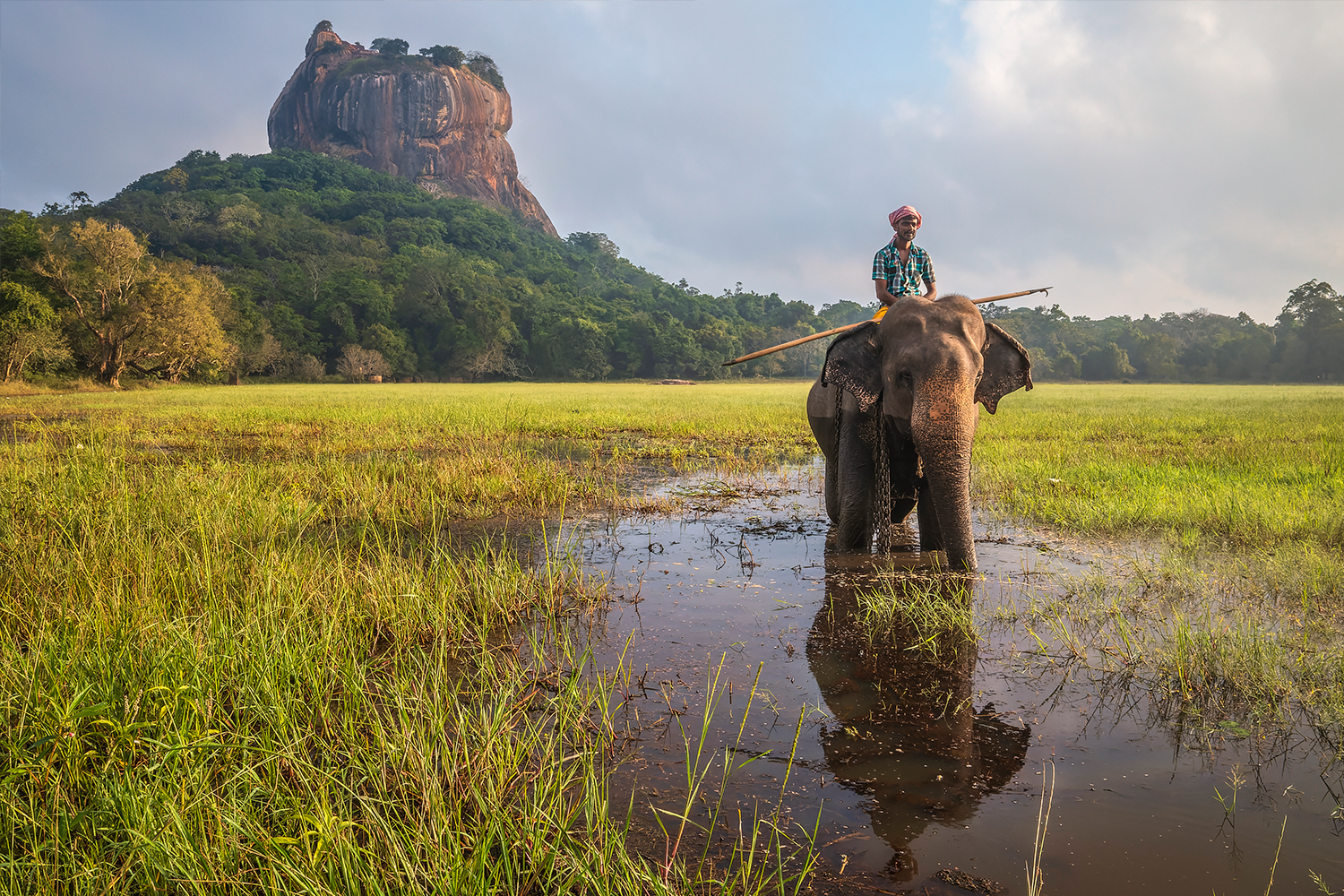
Traveling to Sri Lanka Today
“In Sri Lanka, people want to know where you come from. They practice hospitality, they will invite you into their home to have a cup of tea,” says Prasanna Wijesuriya, a guide and driver with Abercrombie & Kent. “That’s the nature of the people in Sri Lanka.”
Wijesuriya has been a guide on his native island for the past decade, and spent a week taking me around the country while helping me to understand its culture, its history and its present day reality. It was an example of A&K’s luxury tailor-made travel itineraries, customizable experiences built around personal interests. For me, that meant plenty of hands-on culinary exploration mixed with visits to tea plantations, stays at luxury hotels and stops at famed historic sites.
“It’s a small island, but you can see so much that’s different, and every few kilometers you might get a different climate, different wildlife, archaeological sites, cities, beaches,” Wijesuriya says.
Sri Lanka is also a logistics-heavy destination, with five-hour drives separating many stops from one another, so it really is a locale where you benefit from having a dedicated guide to get you around. On our many lengthy drives together, Prasanna and I listened to music and chatted around a sweeping range of subjects as he answered my endless questions. Luckily, we’re both Bruce Springsteen fans, so that was a start.
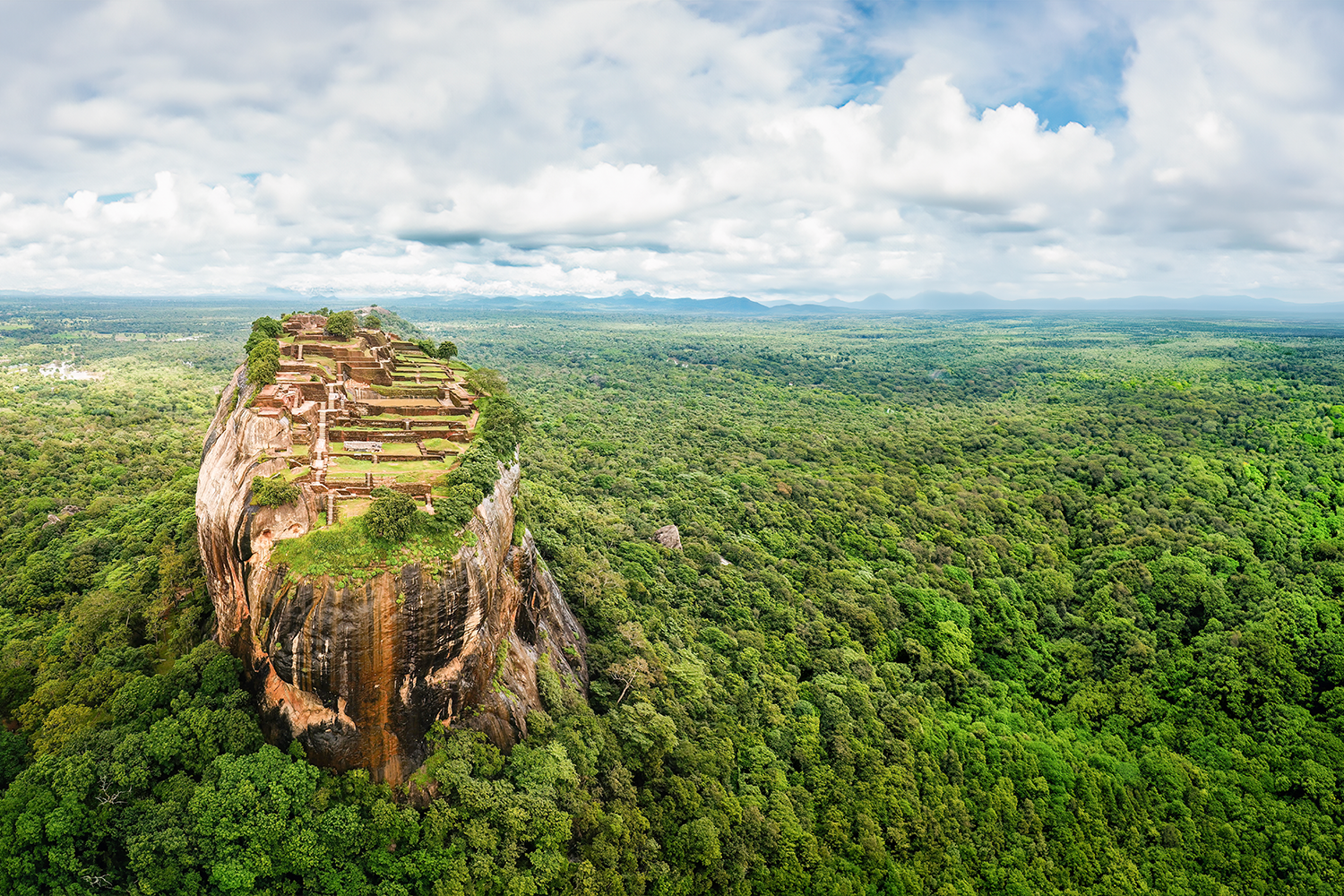
Just as it is a start for Sri Lanka’s still rebounding tourism industry. “I would say tourism is at 20% versus pre-pandemic, and before the Easter bombings in 2019,” says Christopher Rebert, a guide who leads walking tours around the historic districts of Colombo.
Economic conditions remain stifling for the bulk of Sri Lanka’s 22 million residents, with the cost of even basic expenses and necessities soaring out of control, pitted against a dearth of well-paying jobs. There have been some positive strides taken over the past year though, in the wake of a string of protests that captured international attention and led to some — though perhaps not as many nor as effective as was desired — governmental changes.
Optimism rests on an election cycle in 2024, and continuing to build on the bit of momentum that’s now been seen on the ground. “We just have to hope they will do better,” Wijesuriya says. That, along with the return of an even greater number of tourists. “When a tourist comes to Sri Lanka, dozens of people and livelihoods depend on it.”
There’s no ignoring the recent, often harsh reality of what life has been like in Sri Lanka, for Sri Lankans. “But now it’s better than in the past,” Wijesuriya says. It’s a start.
A First-Time Visitor’s Guide to India’s Golden Triangle
From New Delhi to Agra and JaipurWhat to Do & Where to Stay
At the top of many traveler to-do lists for Sri Lanka is a visit to the Sigiriya Rock Fortress. The UNESCO heritage site rests at the summit of an imposing flat-topped rock mound jutting 200 meters from the earth below. After climbing 1,200 steps to its apex, on a combination of natural pathways, ancient, carved stone steps dating back to the 5th century and modern metal stairs added to the site when it was modernized for tourists several decades ago, a stunning view of the surroundings awaits, from the remains of what was one part royal retreat and one part stronghold. It’s south Asia’s answer to Machu Picchu, and in similar fashion was left hidden from the world until a modern rediscovery.
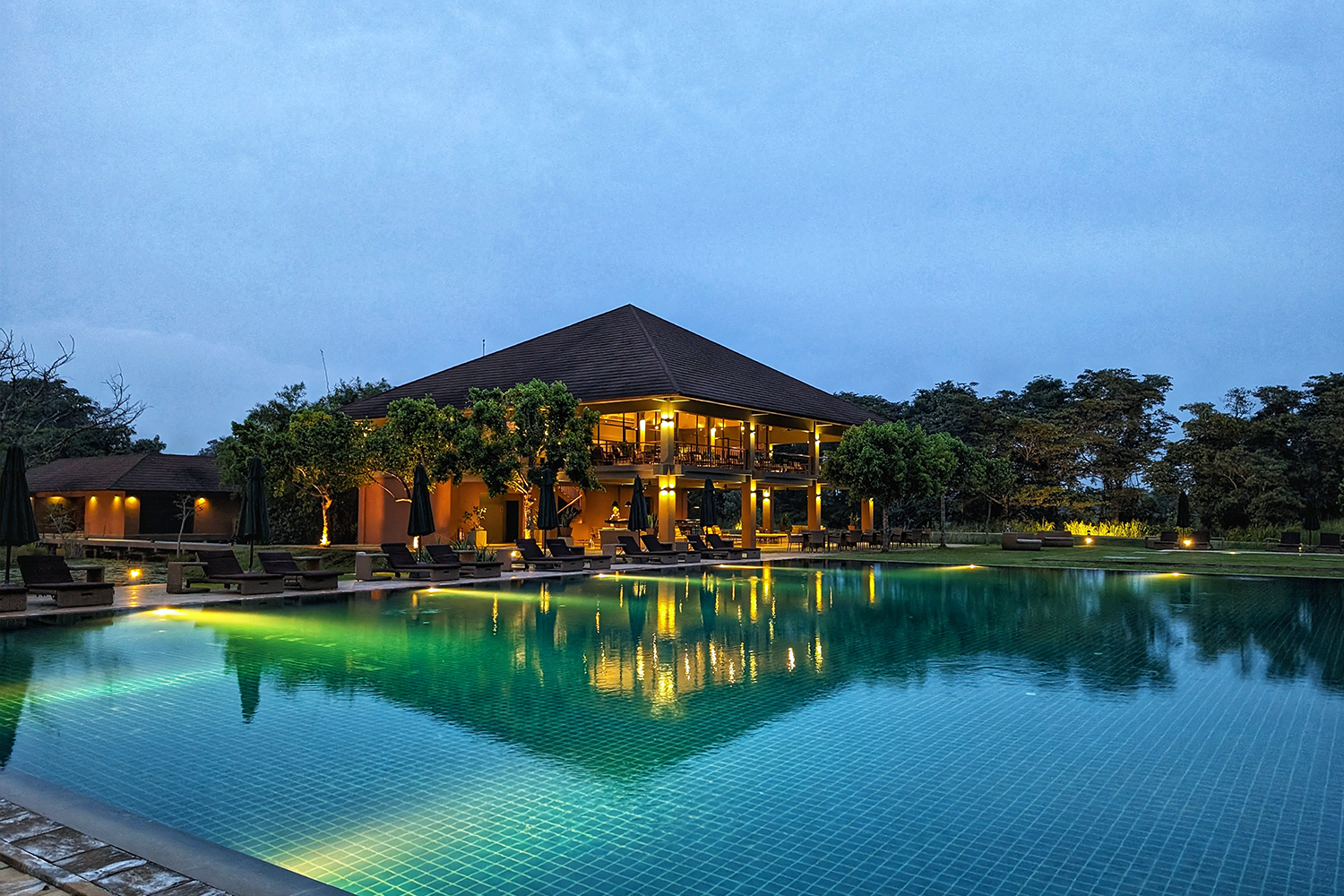
Spend a night or two at the nearby Water Garden Sigiriya, a 38-acre property consisting of 30 villas dotting manicured ponds made in the fashion of the water garden pools surrounding the base of Sigiriya Rock. Several hundred peacocks roam the property, which includes a swanky, central resort pool, two-story bar and lounge and restaurant. The bar’s arrack tasting flight, a sampling of the ancient spirit made from distilled palm wine, or coconut palm flower sap, is a recommended way to wind down after a day of touring, and its restaurant offers a number of signature Sri Lankan dishes.
A half-day drive south past Kandy takes you into the high-elevation domain of the country’s interior mountains, with green, misty valleys in between hillsides studded with tea plantations. Ceylon Tea Trails makes for an ideal home base, with a series of former plantation estates converted into luxury villas, each operating as its own entity but as part of one whole. In total, the Relais & Chateaux property includes 27 guest accommodations spread across its five colonial-era bungalows.
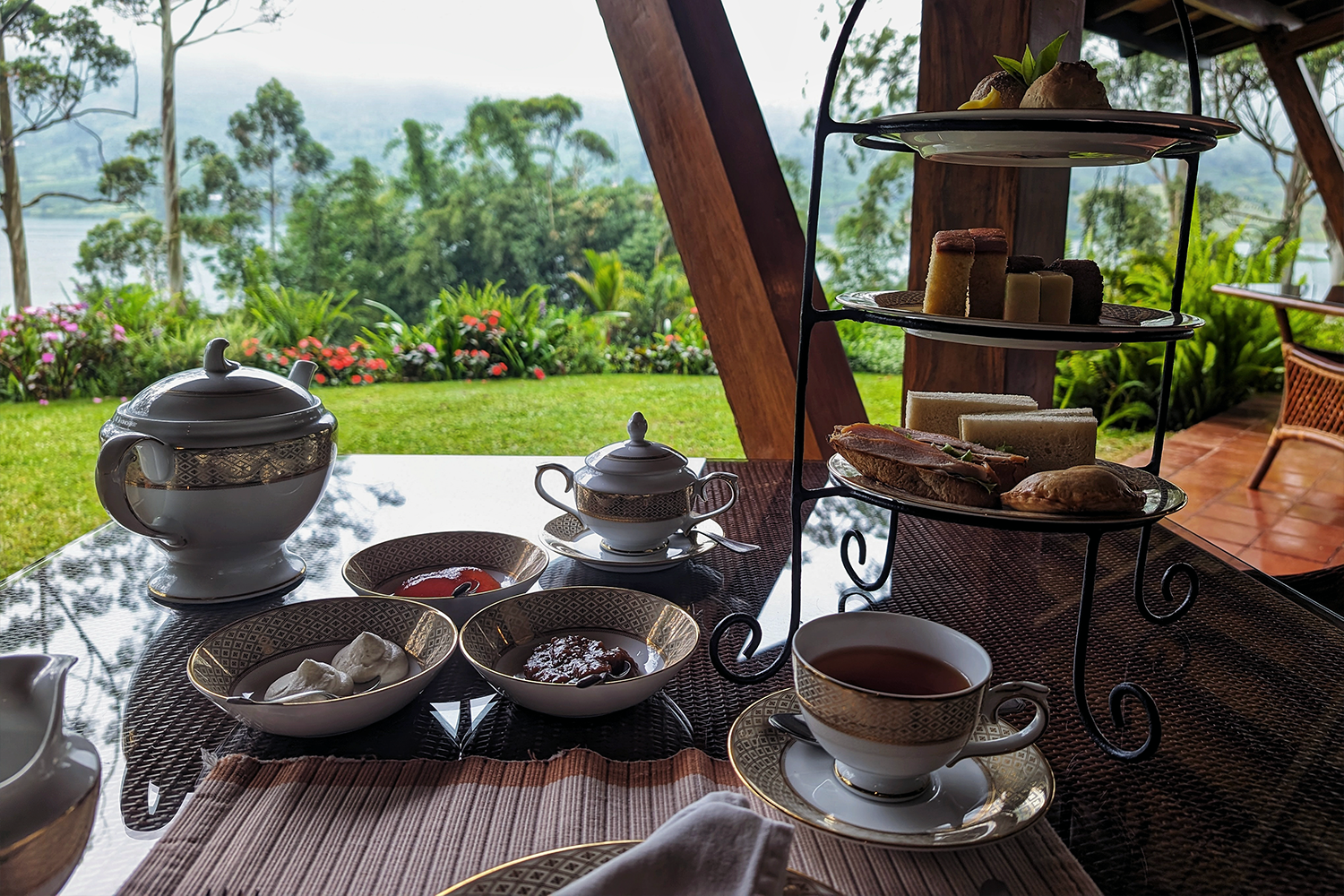
The property is owned by the Fernando family, founders of Dilmah Ceylon Tea, and a key piece of a stay is therefore a visit to a tea estate to gain a firsthand glimpse of its production. Back at your bungalow, afternoon tea awaits. I may not always be the man for such an activity — or at least for an afternoon tea with actual tea, as opposed to one where you sub out a cuppa with a few flutes of Champagne — but this could be perhaps the world’s most perfect setting for it, overlooking the plantations where the tea you’re drinking is cultivated, in view of the factory where it’s processed, and tasting that provenance in your glass.
Another half-day drive gets you to Galle on the island’s southern coast, whose old fortress is another of Sri Lanka’s UNESCO sites. Galle Fort was constructed by the Portuguese in the late-1500s, and added upon and fortified further by the Dutch beginning from the mid-1600s. Its remaining bastions and ramparts today serve as a scenic tourist site known for stunning sunset viewpoints, and filled with shopping streets and restaurants. The coast extending out in either direction from Galle is also a beach getaway that attracts a crowd of sun seekers.
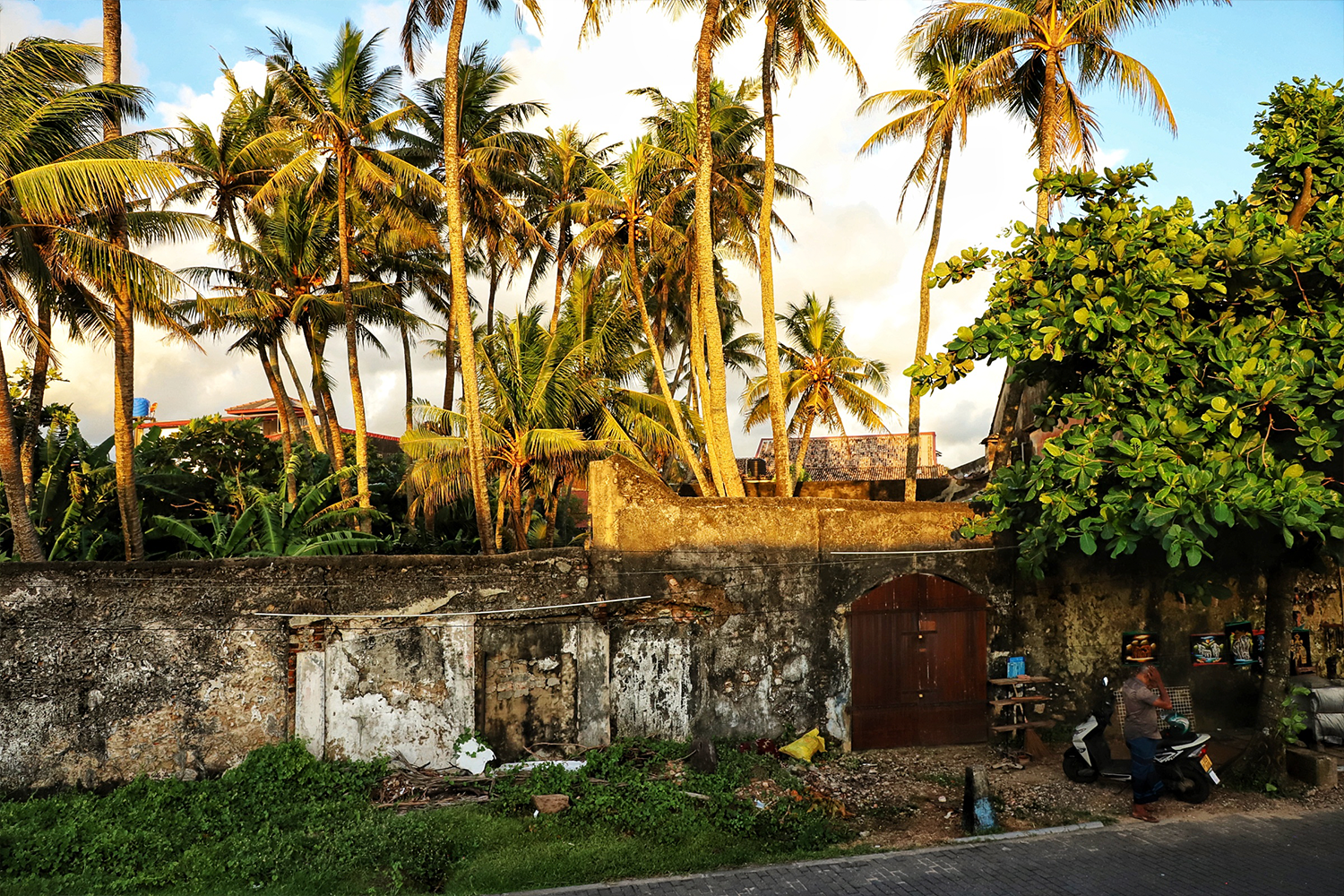
Within the fortress itself, stay at Amangalla, a heritage property in the Aman portfolio. It includes a colonial building from 1684, and consists of 28 rooms set amid a garden setting including a courtyard with a swimming pool and cabanas. Vintage photographs and maps line the walls, with rooms featuring wooden plank floors and furnishings, and standalone bathtubs.
It’s time to explore Colombo, Sri Lanka’s capital, and it’s thankfully a quick two-hour drive away after a series of longer, meandering drives. The old Fort district is now the city’s financial quarter, and the walking tours led by the aforementioned Rebert showcase the juxtaposition between old and new, while stopping at sites such as the Jami Ul-Alfar mosque and the bustling Pettah market district that surrounds it. Elsewhere, make stops at sites such as the Galle Face Green, Viharamahadevi Park, Independence Square and Gangarama Buddhist temple.
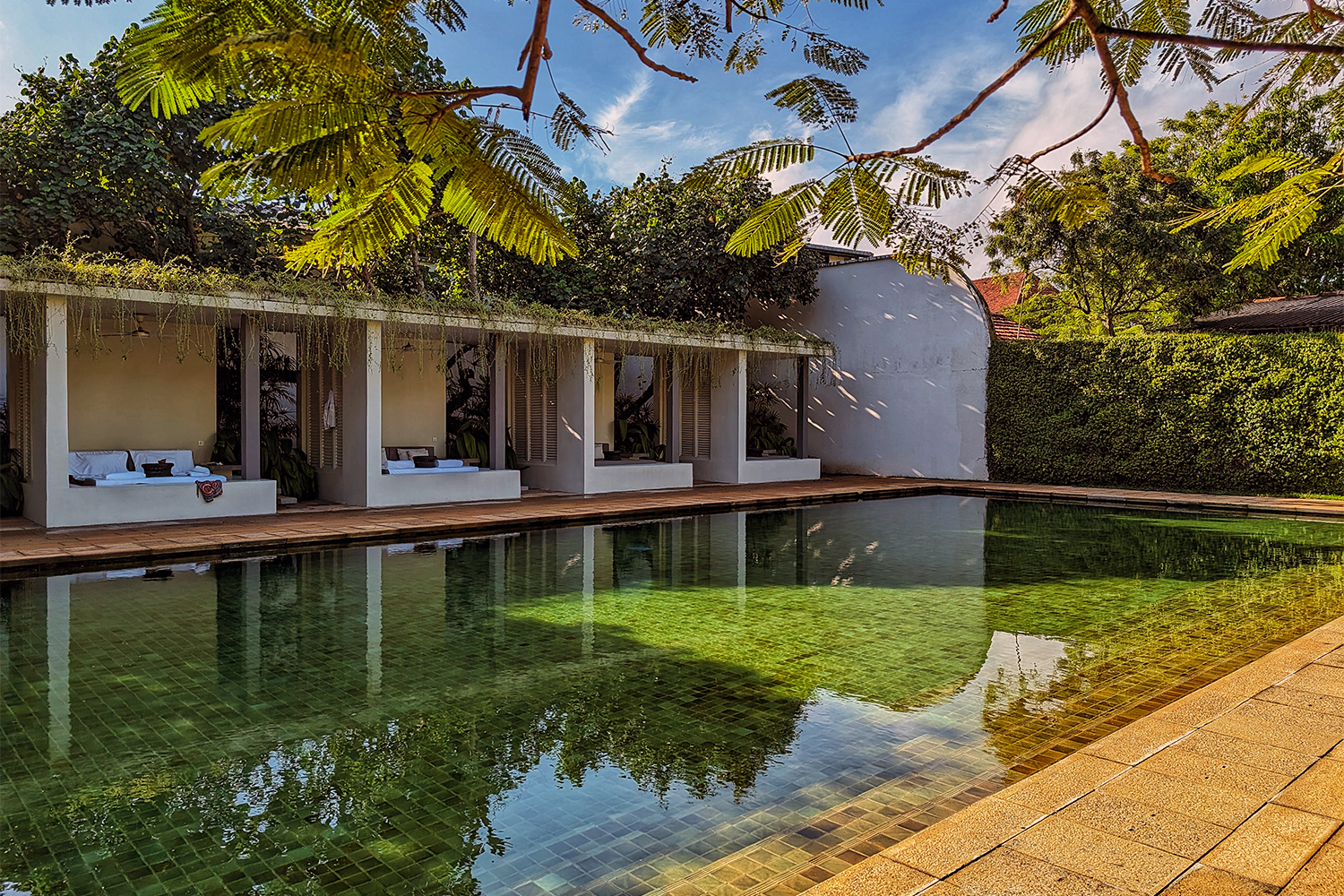
While in Colombo, be sure to visit the Ministry of Crab. The restaurant is located at the heart of the Fort district and has become an international sensation, with locations ranging from China and Thailand to the Maldives. Chef Dharshan Munidasa’s growing crab empire is based on the merits of the Sri Lankan mud crab. He serves inventive dishes and flavor combinations drawing upon his Japanese and Sri Lankan heritage, and has become an advocate for raising the level of Sri Lankan’s culinary and hospitality scenes, while also operating other ventures such as Nihonbashi. Ministry of Crab is famed for its crab size chart, where Jumbo is still several rungs beneath Crabzilla, and signature dishes such as crab liver pate, making for an in-demand table.
For those looking to extend a weeklong Sri Lanka trip into 10 or 14 nights, consider tacking on a visit to the island’s northernmost city, Jaffna. Elsewhere, Yala National Park in southeastern Sri Lanka is a renowned wildlife destination thanks to its abundant leopard population. The area surrounding Sigiriya Rock is also known for its wild elephants, with safari-style excursions on offer. Don’t forget that Sri Lanka is known for Ayurveda, and retreats centering on its treatments, along with indulgent hotel spas featuring Ayurvedic principles, are popular as well.
Depending on the timing of your inbound and outbound international flights, you might want to spend a quick night at a nearby property. The Wallawwa, in the Teardrop Hotels family, is a convenient luxury choice. The boutique hotel consists of 18 rooms spread across the grounds of a 200-year-old colonial house set on seven acres of land, and features a spa and a pool for either some immediate, or last-minute, R&R.
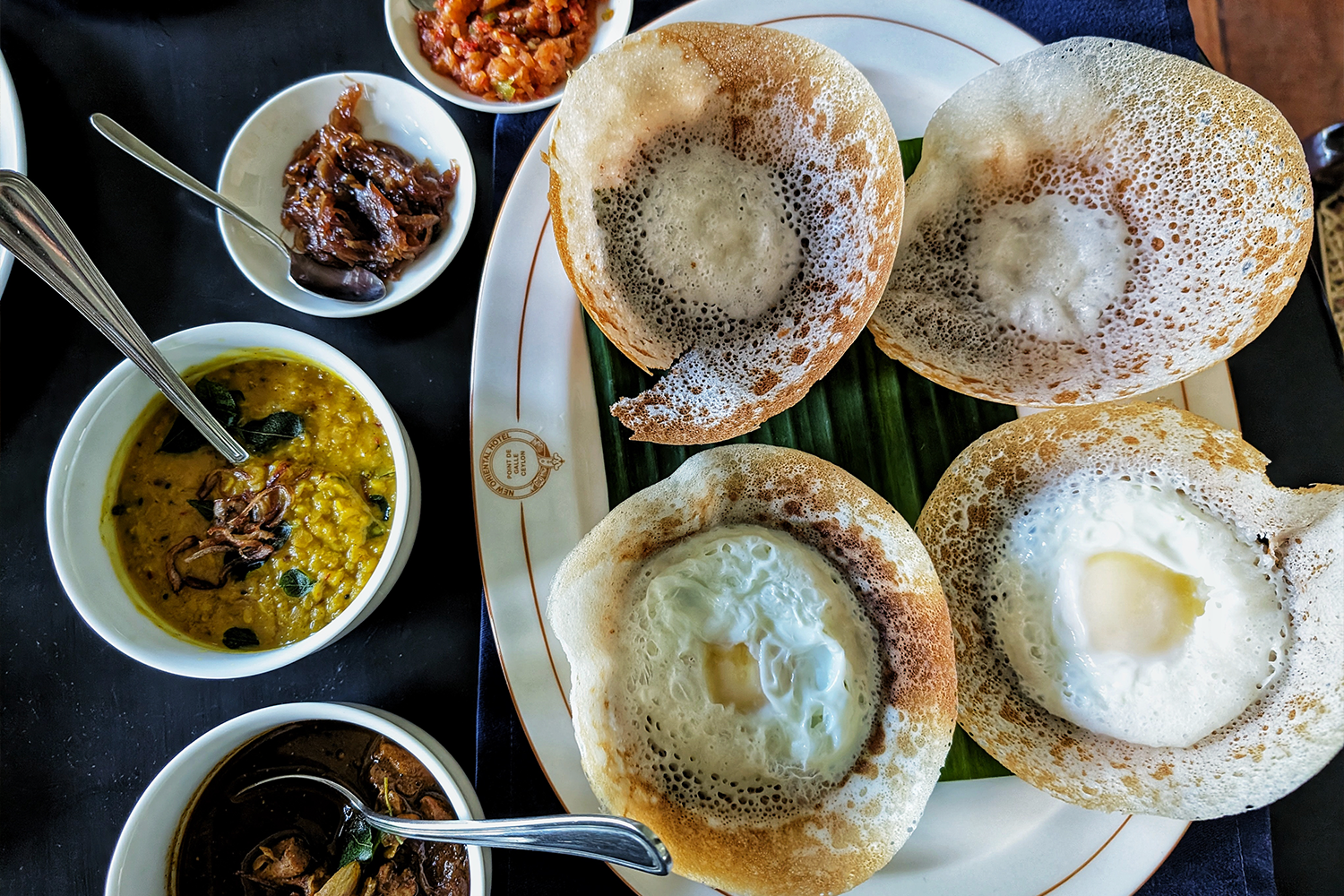
A Food Hit List to Taste Your Way Through Sri Lanka
The bold, spicy flavors of Sri Lankan cuisine will be a highlight for any hungry traveler. Your culinary explorations should start first and foremost with the country’s iconic egg hoppers. The breakfast specialty consists of a bowl-shaped rice flour and coconut milk pancake or crepe base, with an over-easy egg at its center. Load it up with chicken or fish curry and then add on a range of sambols, ranging from mild-for-Sri-Lanka-but-still-spicy to tongue-numbing.
Hoppers can also be served without the egg, while an alternate preparation is the string hopper. In this case, thin strings of roti dough are pressed together into loose mounds, and can be topped with dal and the typical fleet of sambols.
Roti are abundant in all forms, from egg roti and pol roti, or coconut roti served with curry, to kottu roti, with roti bits chopped and mashed up, and mixed with chicken curry or other meats or seafood. Rice and curry is a staple lunch, and for a riff, try egg curry, with boiled eggs serving as the main protein. Pittu is a crumbly, powdery roti log that’s the ideal vessel for soaking up a large ladle of curry poured atop.
Try the devils, or stir fried deviled chicken and other proteins with a thick, spicy sauce and vegetables or a side of fried rice. Sri Lankan short eats, meanwhile, are a category to themselves. These are handheld bites, typically fried and stuffed with something such as chicken curry or potatoes, and come in a number of formats made to be enjoyed on the go or as a quick, affordable snack at any time of the day.
Or the TL;DR version: expect lots of spicy food, roti and curry.
This article was featured in the InsideHook newsletter. Sign up now.
